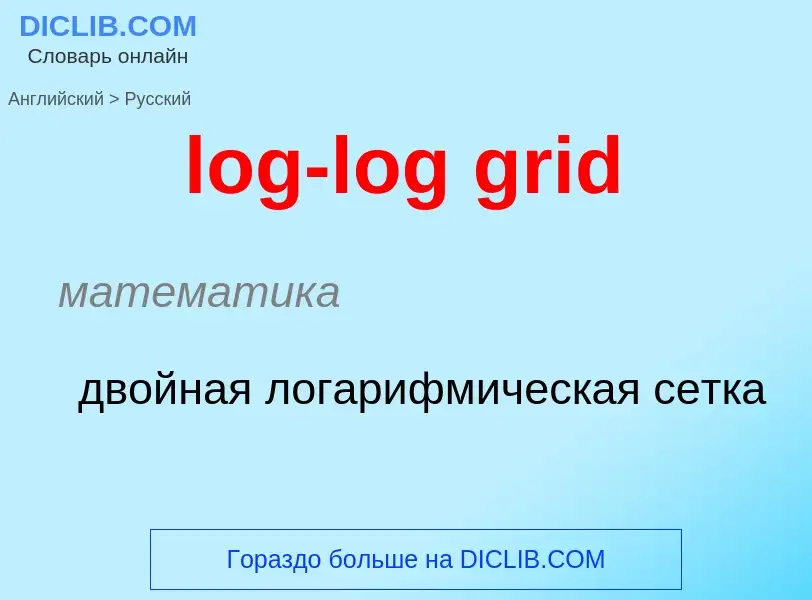Перевод и анализ слов искусственным интеллектом ChatGPT
На этой странице Вы можете получить подробный анализ слова или словосочетания, произведенный с помощью лучшей на сегодняшний день технологии искусственного интеллекта:
- как употребляется слово
- частота употребления
- используется оно чаще в устной или письменной речи
- варианты перевода слова
- примеры употребления (несколько фраз с переводом)
- этимология
log-log grid - перевод на русский
математика
двойная логарифмическая сетка
математика
график с логарифмическим масштабом на обеих осях
математика
график в логарифмическом масштабе по обеим осям
[peit(ə)nt'lɔg]
морской термин
патентованный буксируемый механический лаг
['tʃiplɔg]
морской термин
ручной лаг
общая лексика
двойной логарифм
оптика
билогарифмический
Смотрите также
морской термин
лаг вертушечный
Википедия

In computer science, the iterated logarithm of , written log* (usually read "log star"), is the number of times the logarithm function must be iteratively applied before the result is less than or equal to . The simplest formal definition is the result of this recurrence relation:
On the positive real numbers, the continuous super-logarithm (inverse tetration) is essentially equivalent:
i.e. the base b iterated logarithm is if n lies within the interval , where denotes tetration. However, on the negative real numbers, log-star is , whereas for positive , so the two functions differ for negative arguments.
The iterated logarithm accepts any positive real number and yields an integer. Graphically, it can be understood as the number of "zig-zags" needed in Figure 1 to reach the interval on the x-axis.
In computer science, lg* is often used to indicate the binary iterated logarithm, which iterates the binary logarithm (with base ) instead of the natural logarithm (with base e).
Mathematically, the iterated logarithm is well-defined for any base greater than , not only for base and base e.





